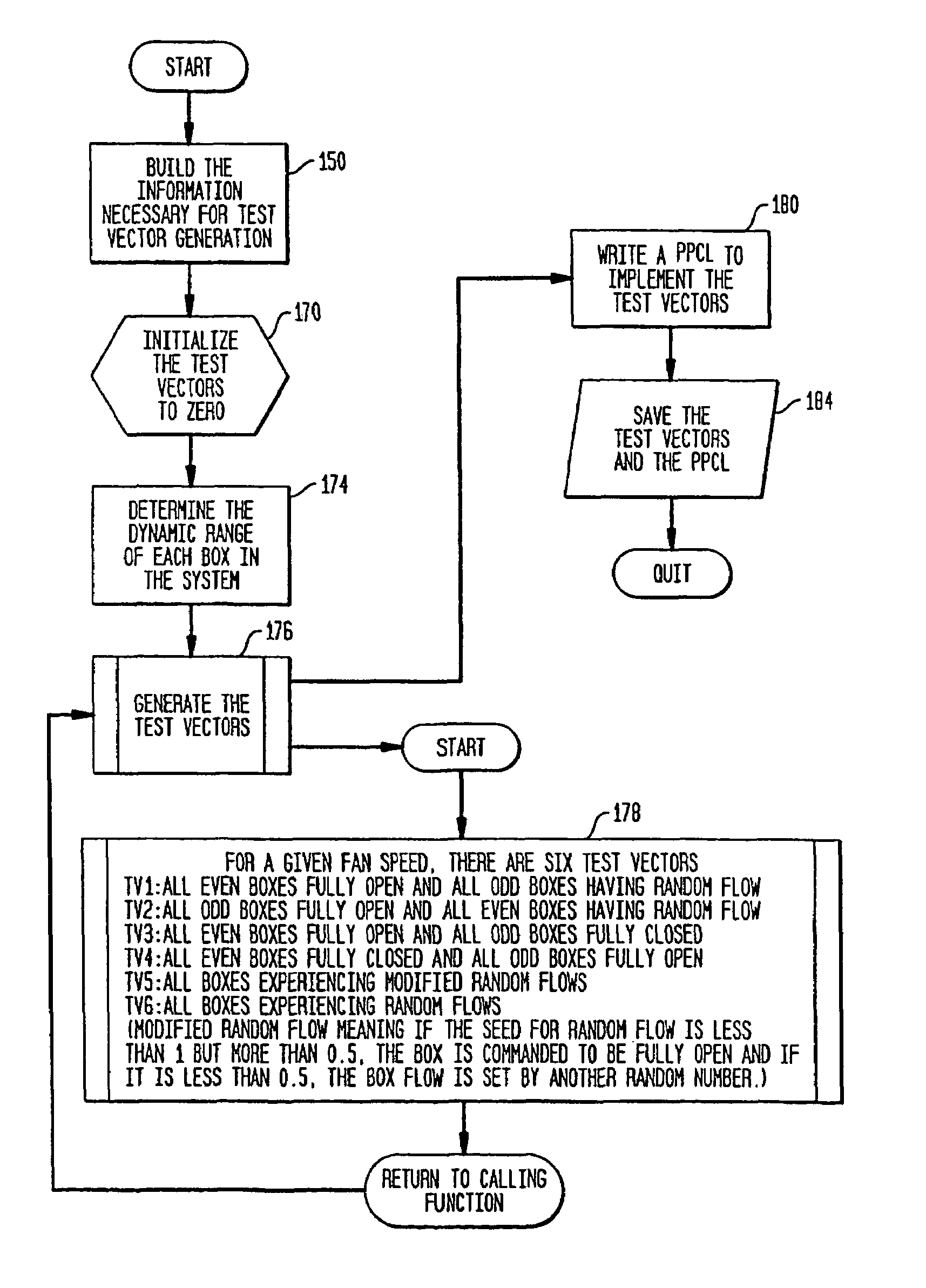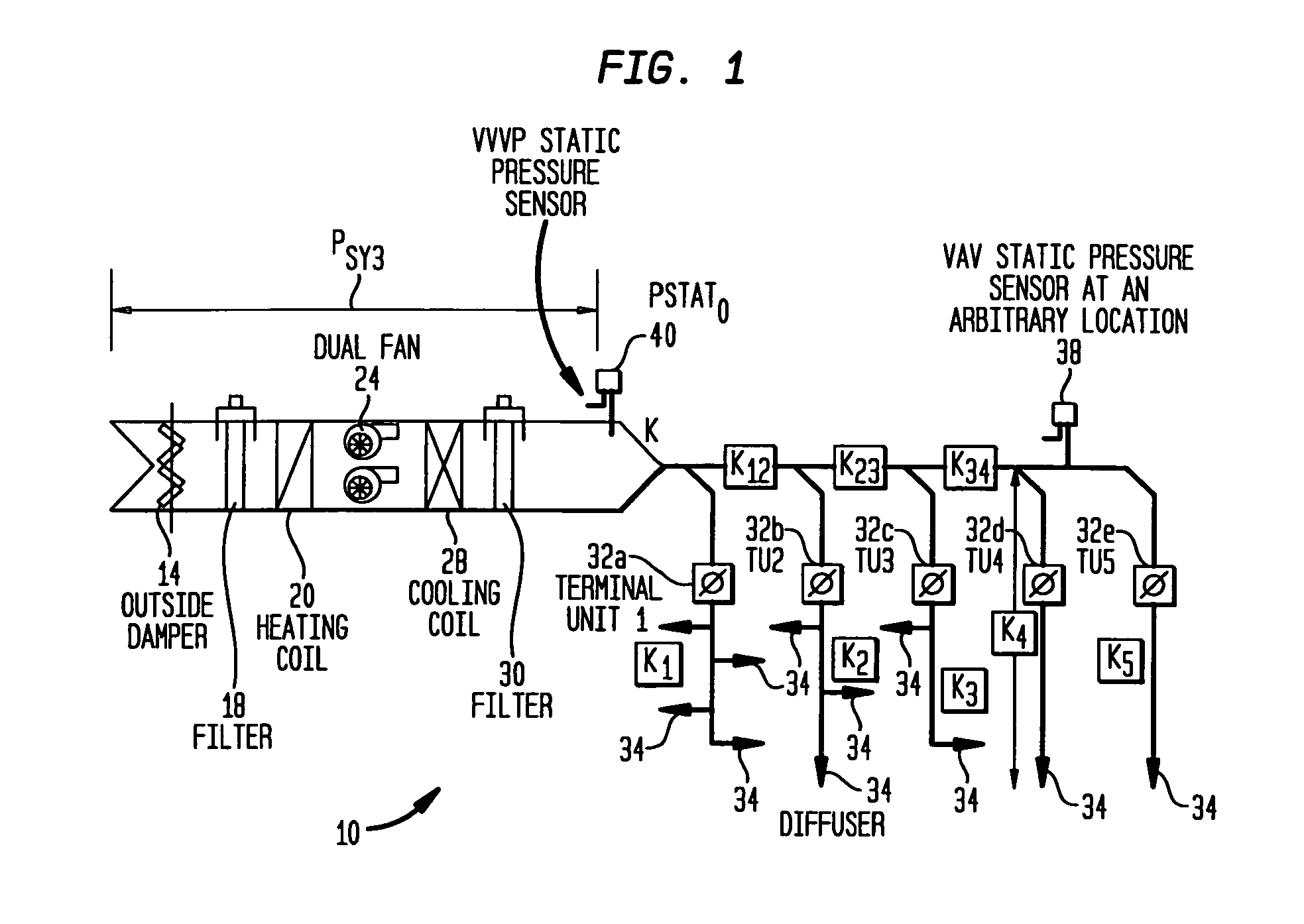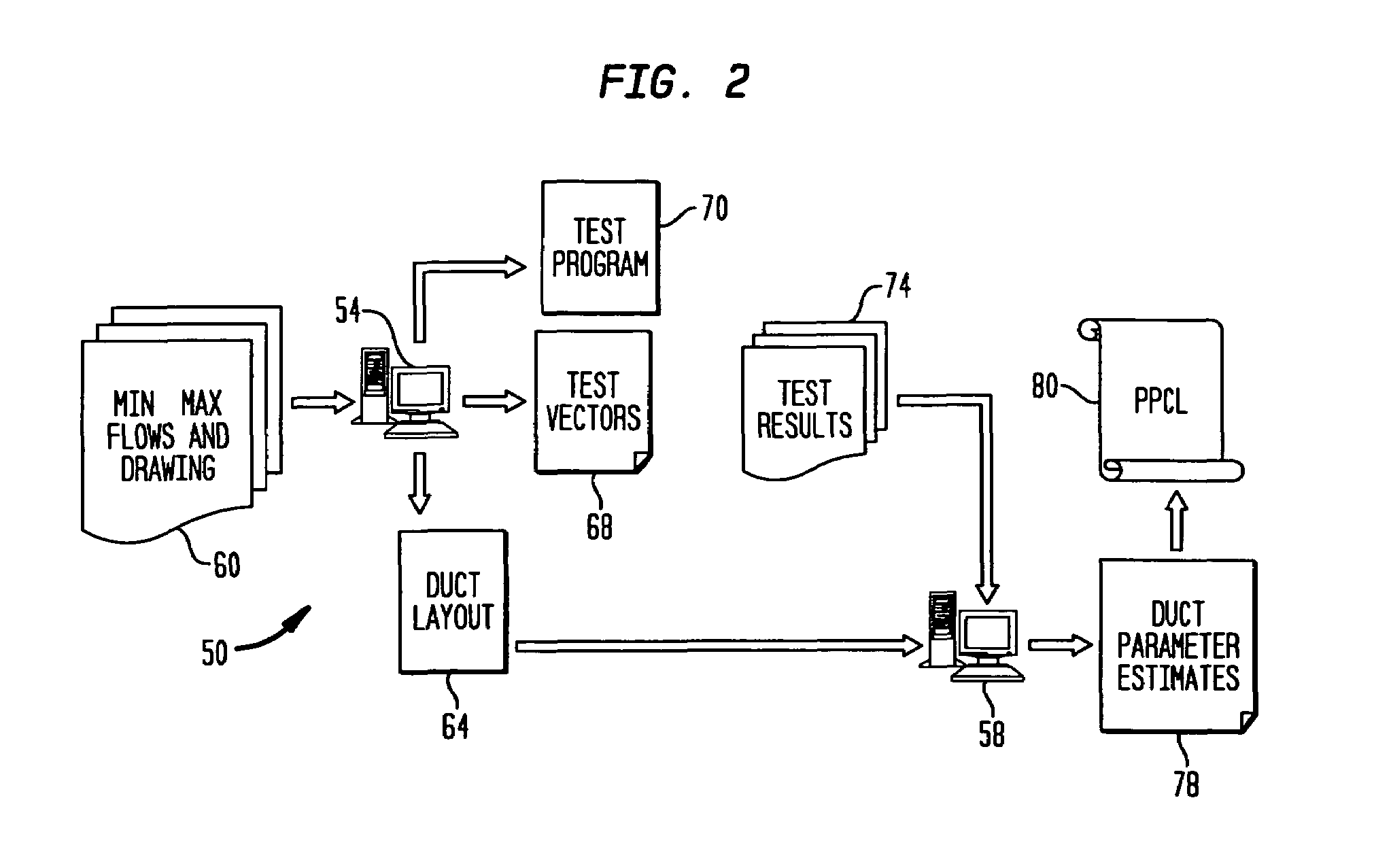System and method for model-based control of a building fluid distribution system
a technology of fluid distribution system and model-based control, which is applied in the direction of electric programme control, program control, instruments, etc., can solve the problems of affecting the test of building system, and rarely experiencing the design conditions of the terminal unit's terminal unit's terminal unit's terminal unit, etc., to achieve the effect of facilitating the testing of building system, facilitating management and maintenance, and accurate computation of flow loss coefficients
- Summary
- Abstract
- Description
- Claims
- Application Information
AI Technical Summary
Benefits of technology
Problems solved by technology
Method used
Image
Examples
Embodiment Construction
[0038]As noted above, an exemplary variable air volume (VAV) system is shown in FIG. 1. Outside air is drawn into system 10 through an outside damper 14, filtered through filter 18, and warmed, if necessary, by heating coil 20. A single or dual fan 24 pushes the air through cooling coil 28 for cooling, if required, and filtered again by filter 30 before being supplied to terminal units 32a, 32b, 32c, 32d, and 32e for distribution through diffusers 34 to zones serviced by the terminal units. Terminal units 32a–32e typically supply air at a constant temperature of 15 degrees Celsius for cooling and 22 degrees Celsius for heating. A fan controller regulates the speed of fan 24 to generate adequate pressure to overcome the resistance provided by the coils, filters, air ducts, and dampers. Typically, the pressure set point used by the fan controller to regulate the fan speed corresponds to an arbitrary location that is generally two-thirds of the distance to the terminal unit that is far...
PUM
 Login to View More
Login to View More Abstract
Description
Claims
Application Information
 Login to View More
Login to View More - R&D
- Intellectual Property
- Life Sciences
- Materials
- Tech Scout
- Unparalleled Data Quality
- Higher Quality Content
- 60% Fewer Hallucinations
Browse by: Latest US Patents, China's latest patents, Technical Efficacy Thesaurus, Application Domain, Technology Topic, Popular Technical Reports.
© 2025 PatSnap. All rights reserved.Legal|Privacy policy|Modern Slavery Act Transparency Statement|Sitemap|About US| Contact US: help@patsnap.com



